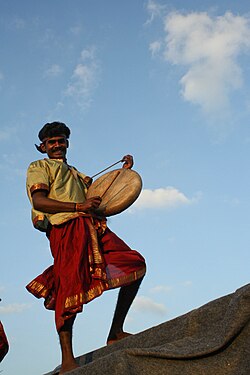| State | Folk dances | Classical dance |
|---|
| Andhra Pradesh | Ghantamardala, Ottam Thedal, Mohiniattam, Kummi, Siddhi, Madhuri, Chhadi. Vilasini Natyam, Bhamakalpam, Veeranatyam, Dappu, Tappeta Gullu, Lambadi, Dhimsa, Kolattam, Butta Bommalu | Kuchipudi |
| Arunachal Pradesh | Chham, Mukhauta Nritya, Buiya, Chalo, Wancho, Pasi Kongki, Ponung, Popir, Bardo, Chong, Khaiva, Lim, Nuralim | |
| Assam | Bihu, Bichhua, Natpuja, Maharas, Kaligopal, Bagurumba, Naga dance, Khel Gopal, Tabal Chongli, Canoe, Jhumura Hobjanai | Sattriya |
| Bihar | Jata-Jatin, Bakho-Bakhain, Panwariya, Sama-Chakwa, Bidesia, Jatra . | |
| Chhattisgarh | Gaur Maria, Panthi, Raut Nacha, Pandwani, Vedamati, Kapalik, Chandaini, Bharthari Charit, Goudi, Karma, Jhumar, Dagla, Pali, Tapali, Navrani, Diwari, Mundari, Jhumar | |
| Goa | Fugdi, Dhalo, Kunbi, Dhangar, Mandi, Jhagor, Khol, Dakni, Tarangamel, Shigmo, Ghode, Modni, Samayi nrutya, Jagar, Ranmale, Amayi Nrutya, Tonnya Mell | |
| Gujarat | Garba, Dandiya Ras, Bhavai, Tippani Juriun, Bhavai. | |
| Haryana | Jhumar, Phag Dance, Daph, Dhamal, Loor, Gugga, Khor, Gagor | |
| Himachal Pradesh | Kinnauri, Thoda, Jhora, Jhali, Chharhi, Dhaman, Chhapeli, Mahasu, Dangi, Chamba, Thali, Jhainta, Daf | |
| Jharkhand | Karma, Agni, Jhumar, Janani Jhumar, Mardana Jhumar, Paika, Phagua, Chhanu, Sarahul, Jat-Jatin, Karma, Danga, Bidesia, Sohrai, Hunta Dance, Mundari Dance, Sarhul, Barao, Jhitka, Danga, Domkach, Ghora Naach | Chhau |
| Karnataka | Yakshagana, Huttari, Suggi, Kunitha, Karga, Lambi | |
| Kerala | Ottam Thulal, Kaikottikali, Tappatikali, Kali Aattam | Kathakali, Mohiniyattam |
| Madhya Pradesh | Tertali, Maanch, Matki, Gaur Maria, Ahirai, Bhadam, Aada, Khada Nach, Phulpati, Grida Dance, Selalarki, Selabhadoni, Jawara | |
| Maharashtra | Lavani, Nakata, Koli, Lezim, Gafa, Dahikala Dasavtar or Bohada, Tamasha, Mauni, Powara, Gouricha | |
| Manipur | Thang Ta, Lai Haraoba, Pung Cholom, Rakhal, Nat Rash, Maha Rash, Raukhat, Dol Cholam, Khamba Thaibi, Nupa Dance, Raslila, Khubak Ishei, Lhou Sha. | Manipuri |
| Meghalaya | Laho, Baala, Ka Shad Suk Mynsiem, Nongkrem, | |
| Mizoram | Cheraw Dance, Khuallam, Chailam, Sawlakin, Chawnglaizawn, Zangtalam, Par Lam, Sarlamkai/ Solakia, Tlanglam, Khanatm, Pakhupila, Cherokan | |
| Nagaland | Bamboo Dance, Temangnetin, Hetaleulee.Rangma, Zeliang, Nsuirolians, Gethinglim | |
| Odisha | Ghumara, Ranappa,Savari, Ghumara, Painka, Munari, Chhau, Chadya Dandanata, Savari, Painka, Munari | Odissi, Chhau |
| Punjab | Bhangra, Giddha, Daff, Dhaman, Bhand, Naqual | |
| Rajasthan | Ghoomar, Suisini, kalbeliya, Chakri, Ganagor, Jhulan Leela, Jhuma, Suisini, Ghapal, Panihari, Ginad | |
| Sikkim | Chu Faat, Yak Chaam Sikmari, Singhi Chaam or the Snow Lion, Yak Chaam, Denzong Gnenha, Tashi Yangku, Khukuri Naach, Chutkey Naach, Maruni Dance | |
| Tamil Nadu | Karagam, Kummi, Kolattam, Kavadi, Koothu, Paraiattam, Pampaattam, Oyilaattam, Mayilaattam, Puravaiattam, Kai silambattam | Bharatnatyam |
| Telangana | Perini Shivatandavam, Keisabadi | |
| Tripura | Hojagiri | |
| Uttar Pradesh | Nautanki, Raslila, Kajri, Jhora, Chappeli, Jaita | Kathak |
| Uttarakhand | Chappeli, Gadhwali, Kumayuni, Kajari, Jhora, Raslila | |
| West Bengal | Purulia Chhau, Alkap, Kathi, Gambhira, Dhali, Jatra, Baul, Marasia, Mahal, Keertan,Santhali Dance, Mundari dance, Gambhira, Gajan, Chaibari Nritya | Chhau |







